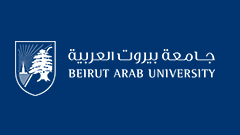Keywords
Ferula hermonis; Phytochemical Content; Analysis; Ferutinin; Neuroprotective.
Disciplines
Architecture | Business | Life Sciences | Medicine and Health Sciences
Abstract
Ferula hermonis (F. hermonis, Fh) is one of the important medicinal-plants cultivated in Lebanon. The aim of this study is to phytochemically-investigate F. hermonis and its most active compound(s) and to explore their neuroprotective potentials utilizing an in vivo model of glycine receptor. HPLC-DAD investigation was done to identify F. hermonis phytochemical constituents. Combined chromatographic, bio-guided fractionation, and in vivo model of glycine receptor were utilized to identify its most active constituent(s). HPLC has shown that F. hermonis has shown 11 major peaks identified as: (1) Jaeskenin (2.47%), (2) Acetoxy-Ferutinin (3.71%), (3) Lapiferin (4.95%), (4) Siol anisate (6.16%), (5) Fertidin (7.38%), (6) Ferutinin (24.60%), (7) p-Coumariloxy jaekeanadiol (7.29%), (8) Akiferin (5.98%), (9) Ferulenol (23.7%), (10) Ferutidin (4.68%), and (11) Jaekeanadiol benzoate (6.03%). Ferutinin (Ft) was identified as the most active constituent in F. hermonis. The novelty in this work that F. hermonis has shown neuroprotective potentials utilizing an ICV, for the first time, in the in-vivo model of glycine receptor. Ft has shown more significant (p˂ 0.05) neuroprotective potentials than F. hermonis. It could be concluded that F. hermonis has significant neuroprotective potentials and that Ft might be responsible for this activity.
Recommended Citation
Raafat, Karim
(2019)
"PHYTOCHEMICAL AND NEUROPROTECTIVE INVESTIGATION ON FERULA HERMONIS,"
BAU Journal - Health and Wellbeing: Vol. 1:
Iss.
2, Article 3.
DOI: https://doi.org/10.54729/2789-8288.1002
Included in
Architecture Commons, Business Commons, Life Sciences Commons, Medicine and Health Sciences Commons

